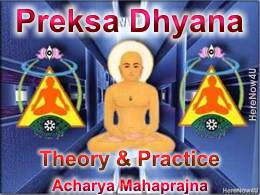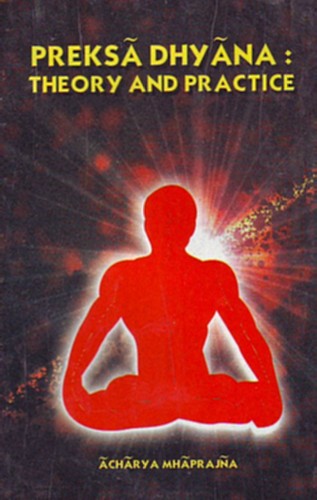
The technique of Sarira Preksa (perception of body) is an efficient means to re-establish one's contact with his body and to develop one's ability to trigger beneficial mechanism.
The process is centripetal, that is, from outside to inside. Commencing with the outermost layer of the body, one has to penetrate deeply inside. Thus the successive stage of the exercise would be perception and awareness of:
- Superficial sensation of the skin such as contact with clothes, warmth, itching, perspiration etc.
- Sensations of the muscular movements.
- Deeper sensations of the internal organs.
- Subtle vibrations of the electrical impulses in the nervous system.
Some of the above sensations may be pleasant whereas some others may be unpleasant. Here perception means experience free from duality of like and dislike.
Exercise:
Starting from the big toe of the right foot, moving upwards, carry out perception of the whole body focusing total attention on each part of the body in turn, until you reach the top of the head. Be aware of the vibrations taking place in each part without indulging in like and dislike, in the following order:
- Direct your consciousness to the
à big toe of the right foot.
Allow it to spread and permeate throughout the whole toe. Perceive and be aware of sensations and vibrations taking place in the region.
- Now, shift your attention to the other
à toes
and follow the same procedure with each one of them by turn.
- Next, shift your attention to the sole of the
à foot
and perceive the entire area with equanimity.
- Continue the perception shifting your attention to the other parts in this order:
à heel, upper portion of the foot, ankle-joint, calf-muscle, knee, thigh and buttock.
- Now shift your attention to the
à left limb and follow the same steps as you did with the right limb.
Penetrate deeply in each portion; concentrate and become acutely aware of whatever sensations you may be able to perceive. Be careful not to involve yourself emotionally either with like or dislike.
- Having come up to the hip-joint, direct your consciousness further upward and focus your attention on
à lower abdomen (front and back), upper abdomen (front and back).
- Now, penetrate inside the abdominal cavity; contact each of the following organs in turn and perceive their function without emotion: à spleen, kidneys, big intestine, small intestine, pancreas, liver, stomach and diaphragm.
- Direct your consciousness further upwards and perceive the
à rib-cage, chest (front) and upper back up to the collar bone.
- Penetrate the rib-cage and perceive the functioning of the
à lungs and the heart.
With a good concentration, the throbbing of the heart can be heard and perceived.
- Next, direct your consciousness to hands and arms; starting with the thumb and fingers, be aware of the sensations and vibrations in each portion:
à thumb, fingers, palm, wrist, lower arm, elbow, upper arm, shoulder.
Take the right limb first and then the left limb.
- Next, direct your consciousness to the neck and slowly travel upward up to the top of the head focusing attention on each of the following parts:
à neck (front and back), chin, lips, tongue, teeth, palate, cheeks, nose, eyes, temples, ears and forehead.
In each case, penetrate as deep as you can and keep your attention focused for a minute or two with as much concentration as you can.
- Now, stand up slowly and carefully and keeping your eyes closed, direct your consciousness to travel from
à feet to head and
à head to feet
at a quicker rate. Mentally feel every portion of the body from the surface of the skin to the inside of the bone. Continue this for 4 to 5 minutes and then slowly resume your sitting posture.
 Acharya Mahaprajna
Acharya Mahaprajna

